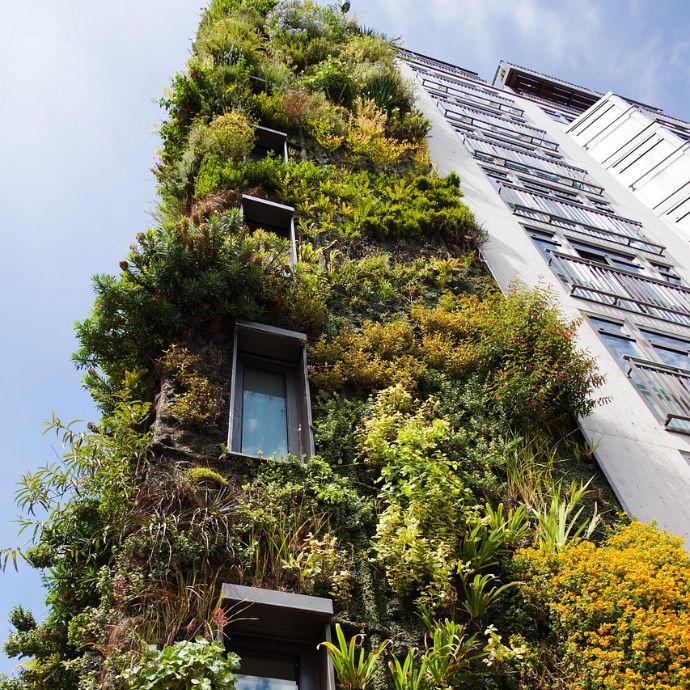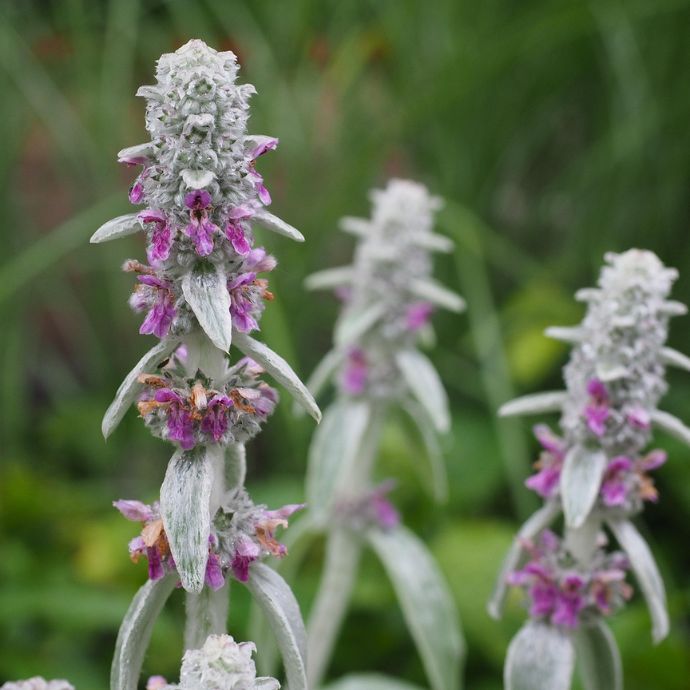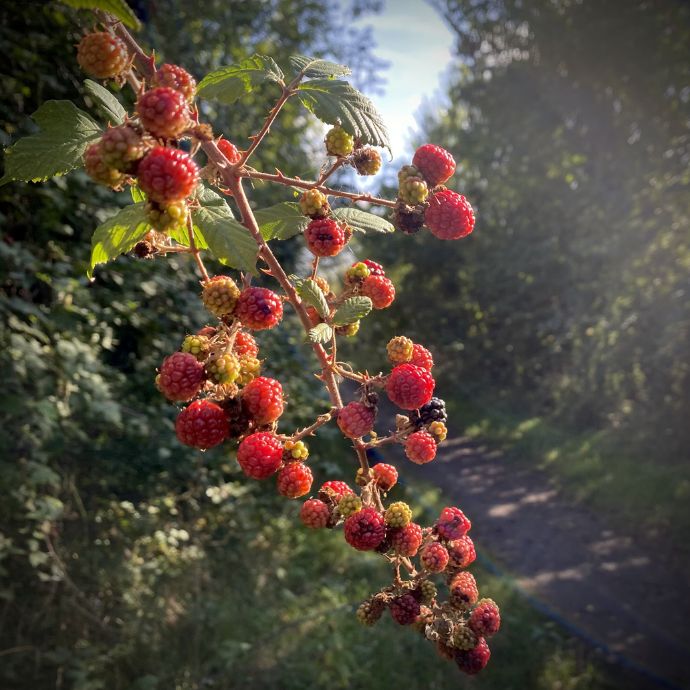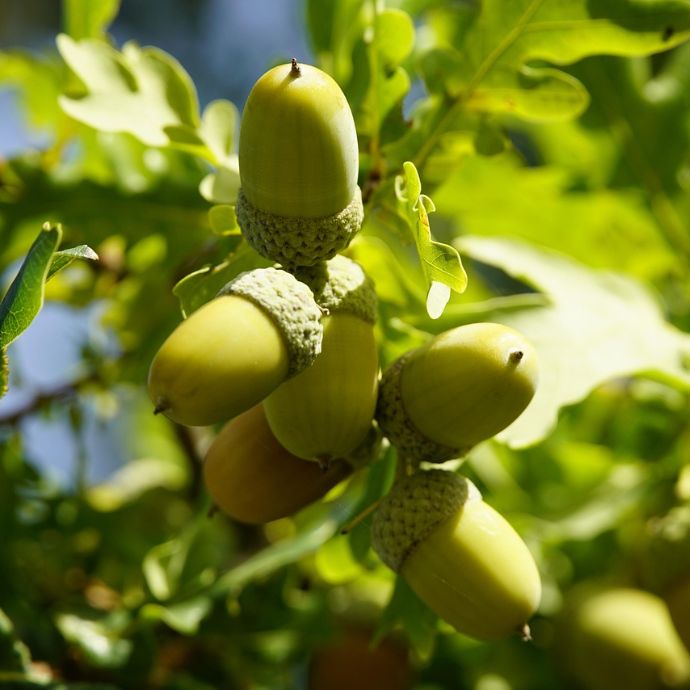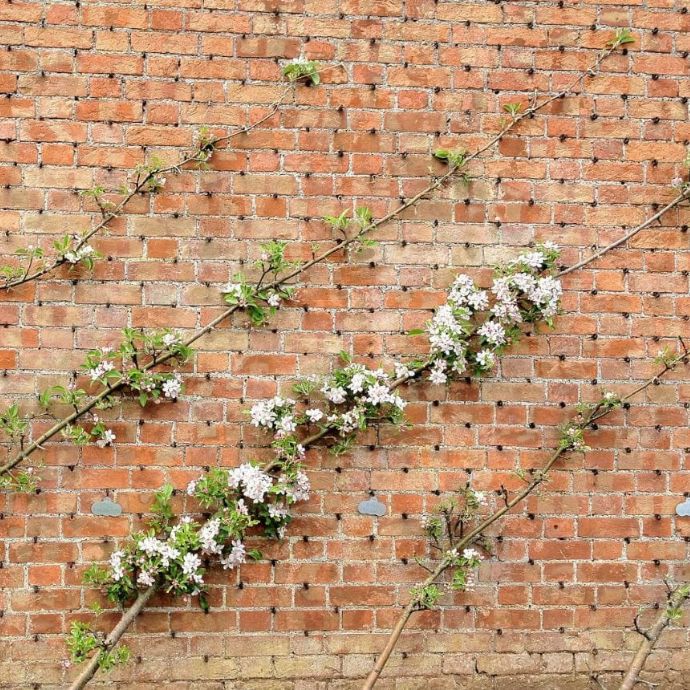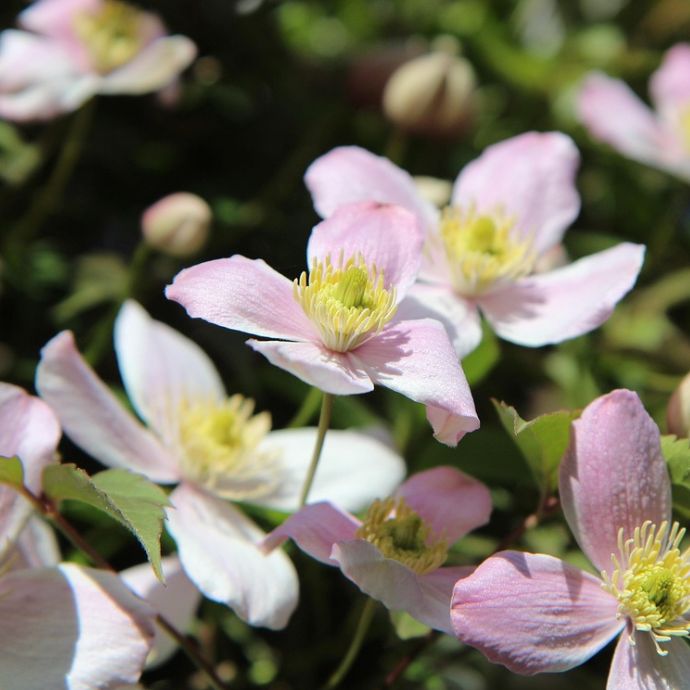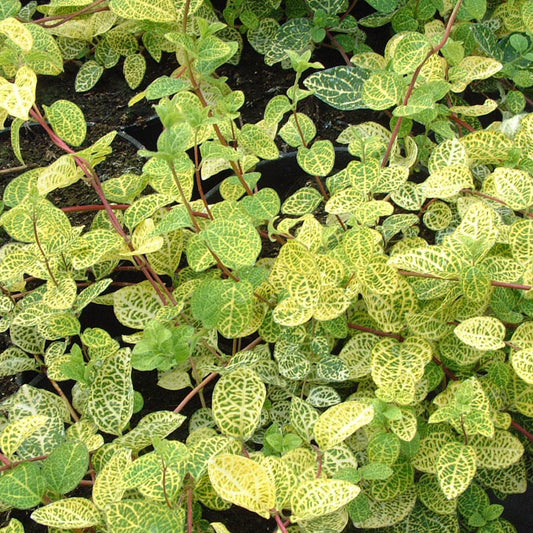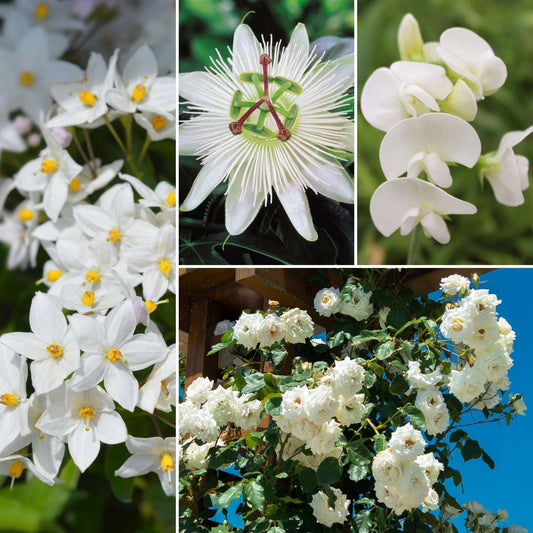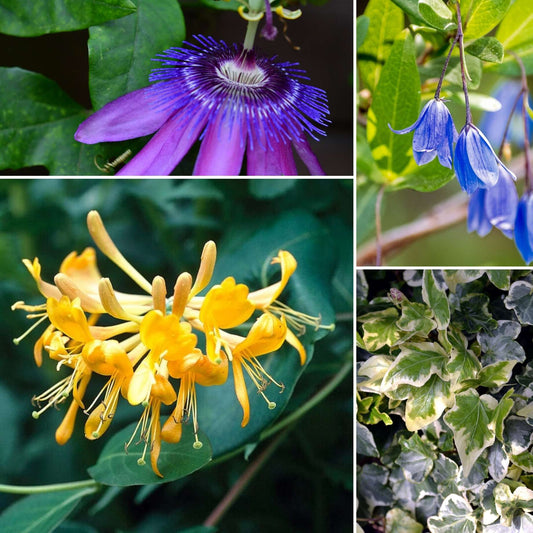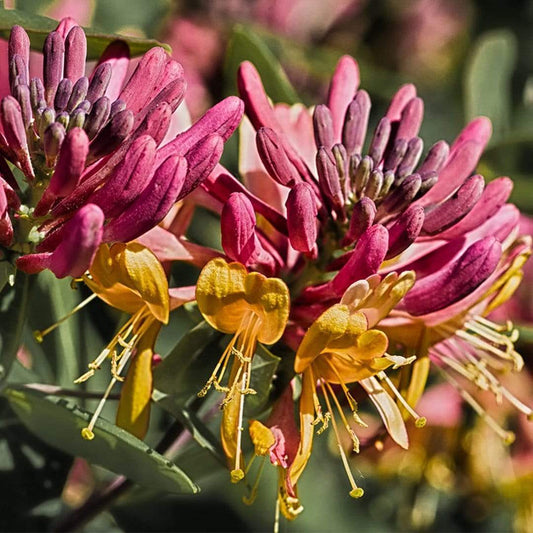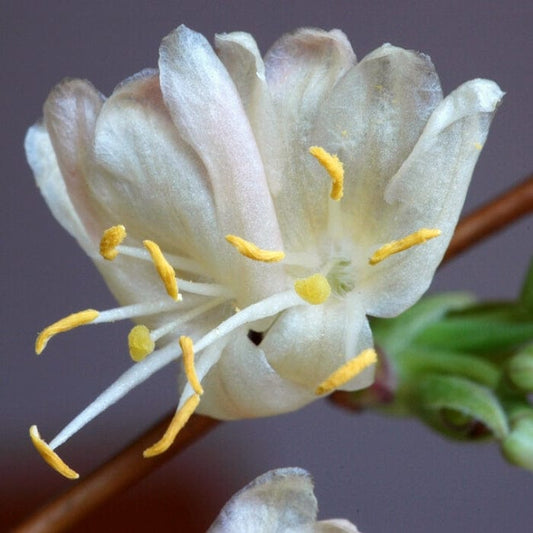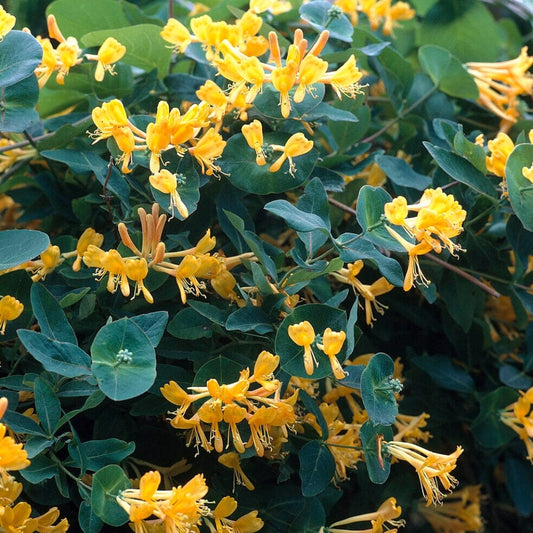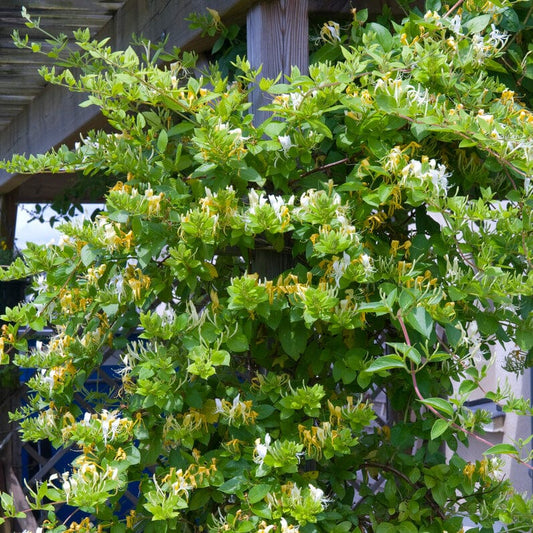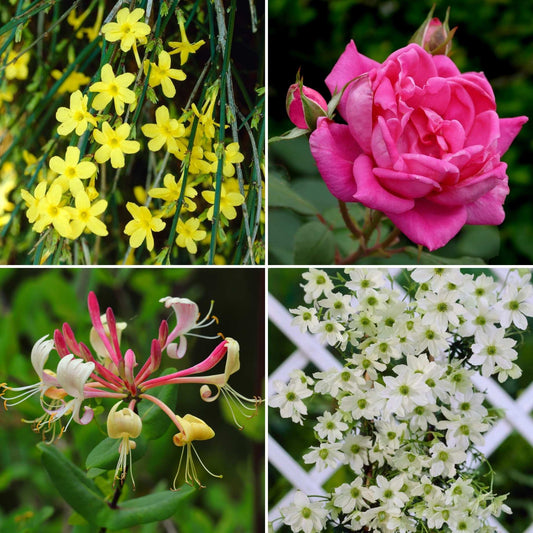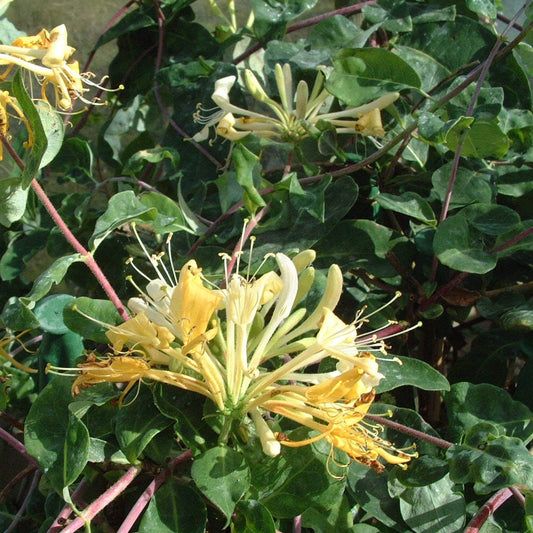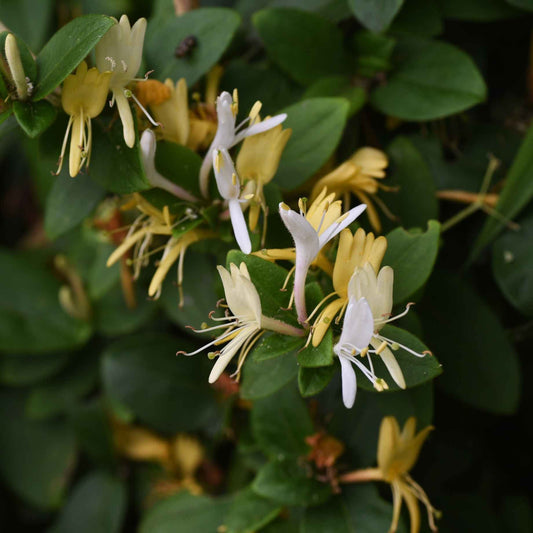Pruning Honeysuckle: The Complete Guide
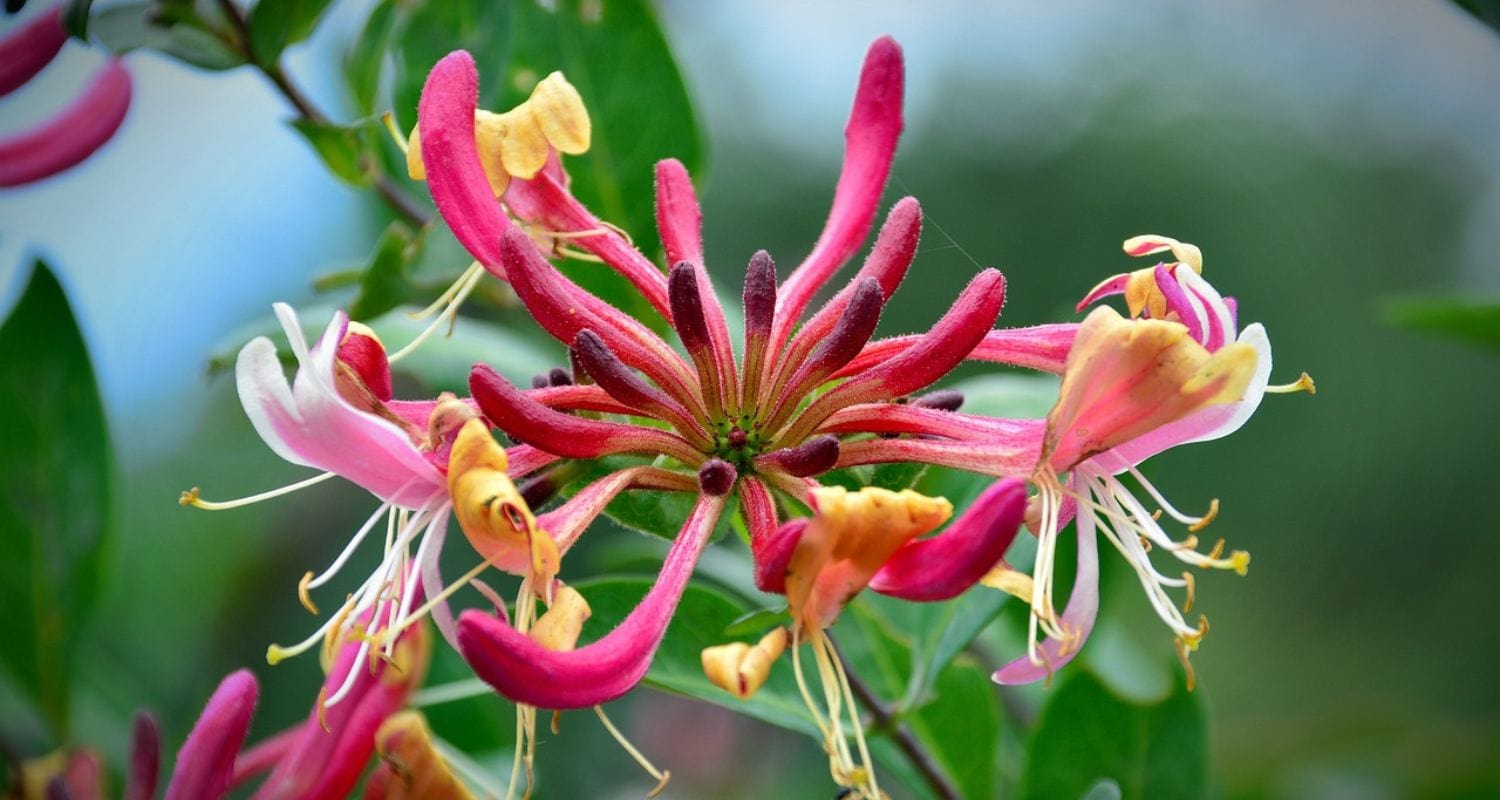
Honeysuckle is one of the most fragrant flowering climbers you can grow: a real summer essential! It’s a pretty easy-going plant which is easy to care for, but one thing you shouldn’t miss out on is pruning it. Here’s how to prune yours like a pro.
Rushed for time? Honeysuckles generally need pruning every other year to keep them as healthy and productive as possible. Summer- and winter-flowering honeysuckles require trimming at different times, while the pruning requirements themselves can range from simply removing side shoots all the way through to hard pruning back to 60cm (or so).
Jump to:
- Why pruning is necessary for honeysuckles
- Honeysuckle pruning frequency
- Pruning summer-flowering honeysuckles
- Pruning winter-flowering honeysuckles
- Pruning honeysuckles in winter
- Pruning old honeysuckles
- Pruning obelisk-trained honeysuckles
- Pruning edible honeysuckles
Why do you need to prune honeysuckle?
Honeysuckle is a hardy, vigorous plant which needs very little human intervention. However, a little pruning at the right time each year (or two) can help your plant to flower more, grow in the direction or shape you want it to and get more of the sun it needs to thrive.
Different types of honeysuckle are pruned at different times of the year, so it’s important to know which is the best time for yours - and if you have an older honeysuckle that’s perhaps not as productive or healthy as it once was, you’ll be amazed at the difference a good trim can make!

How often should you prune honeysuckle?
You don’t need to prune honeysuckle on a yearly basis, in fact unless it’s growing out of control, you can pretty much leave it to its own devices for the first couple of years. As your plant grows, pruning becomes more important, to help your plant direct its energy into more flowers.
For very vigorous growers, you can trim them every year, but if you’re happy with the size and shape of your honeysuckle, it certainly won’t hurt to leave the job for every other year. As your plant gets older, you may want to add in a winter tidy-up trim, to keep it healthy and encourage it to produce new young shoots and flower buds the following year.

How do you prune honeysuckle?
You won’t need any special equipment for pruning honeysuckle - a good sharp, clean pair of secateurs is all that’s necessary (and of course a stepladder if your honeysuckle has climbed out of reach - but that’s all the more reason to prune it).
The first thing to do is determine which kind of honeysuckle you have. Most of them flower in late spring or summer and climb to heights of 4m and over, but others flower in winter, have more compact, shrubby growth and need a different pruning regime. Read on to find out what to do with each type.

Pruning summer-flowering honeysuckle
Summer-flowering (or climbing) honeysuckle, is the most commonly-found type. Unless they’ve got out of hand, they’ll usually only need a light trim to keep them in shape. Too much pruning will reduce the following year’s flowering. The flowering time of these honeysuckles does vary somewhat, and there’s a slightly different method for each type.
Early-flowering honeysuckles
These varieties bloom from May to June and sometimes beyond. The right time to prune these is after they’ve finished flowering. You can cut the stems back by about a third, to keep the shape you want. Don’t be tempted to deadhead the faded flowers, as these will turn into berries which add a nice bit of autumn interest and attract birds.
Late-flowering honeysuckles
These honeysuckles flower from June or July into autumn. These types of honeysuckle flower on the current season’s growth, so you’ll need to prune lightly in spring and take care not to cut back too hard or you’ll lose the flower buds. Simply thinning out any crowded, tangled areas and removing dead or damaged stems is enough for this type of honeysuckle.

Pruning winter-flowering honeysuckle
For winter-flowering or shrubby honeysuckles (those that flower from December to March), you may not need to prune at all, unless your plant looks like it needs a tidy up.
Once it’s finished flowering, cut back any stems that have flowered down to a strong young shoot near the base of the plant. You can safely cut back about a quarter of the old growth in this way, which will encourage the plant to produce new stems during the year.

Winter pruning honeysuckle
When either type of honeysuckle gets established (after a few years), you may find it benefits from a light, additional pruning in winter. This has the benefit of stimulating new growth in the following year as well as helping to prevent fungal diseases which can take hold in the damp winter weather.
You can cut back fairly hard in the winter, pruning all of the stems down to about 60cm from the base of the plant. It’s also a good idea to shape the new growth and avoid tangles by tying the strongest stems into the plant’s support and create a nice open framework that will allow air to circulate once the new stems grow.

How do you prune an old honeysuckle?
If you’ve inherited an older honeysuckle, or you just haven’t pruned yours for several years, here’s how to give it a new lease of life. This kind of pruning job should be done in mid winter – around January time – and on a dry day. Some older, tangled honeysuckles may have birds nesting in them, so avoid any kind of pruning of these between February and the end of August.
As above, you can go in really hard with this one. Cut all of the plant’s stems right down to 60cm from the ground and pick the strongest shoots to tie into the supports. If your honeysuckle is on a support that is no longer er, supportive, such as a broken trellis, this is the ideal time to put a new one in place.
If this is the plant’s first trim in years, it may come as a bit of a shock to it and you might find it doesn’t flower the following year, but don’t worry - all of its energy will be going into making fresh new growth and it’ll look like a new honeysuckle in no time.

How do you prune honeysuckle on an obelisk?
Honeysuckles are great plants for growing in small spaces, such as in pots and on obelisks, but they do need more regular pruning to keep them in shape and help them flower more productively.
To keep yours in a nice neat shape, cut out any side shoots that are sticking out of the framework, cutting back to a healthy pair of buds. You can take as much off the top as you need to, as it will grow back with renewed vigour after a good trim. Any loose shoots can be woven into the obelisk or other support, to create a more even coverage.
How do you prune edible honeysuckle (honeyberries)?
Edible honeysuckles, or honeyberries, have similar pruning needs to early flowering summer honeysuckles. If you’ve just got yours, you can swerve the pruning for two or three years (you can of course remove any dead or damaged stems if necessary) and just let it get established.
After this, your honeyberry should be pruned each June after it’s finished fruiting, when you can trim about a quarter of the oldest growth back to a pair of strong buds at the base of the plant. Any more than this and you could risk not having enough new shoots for fruit the following year, so prune with caution! On a roll? Find out how to prune more climbing plants in our growers’ guide.
Last updated: 17/10/2025


